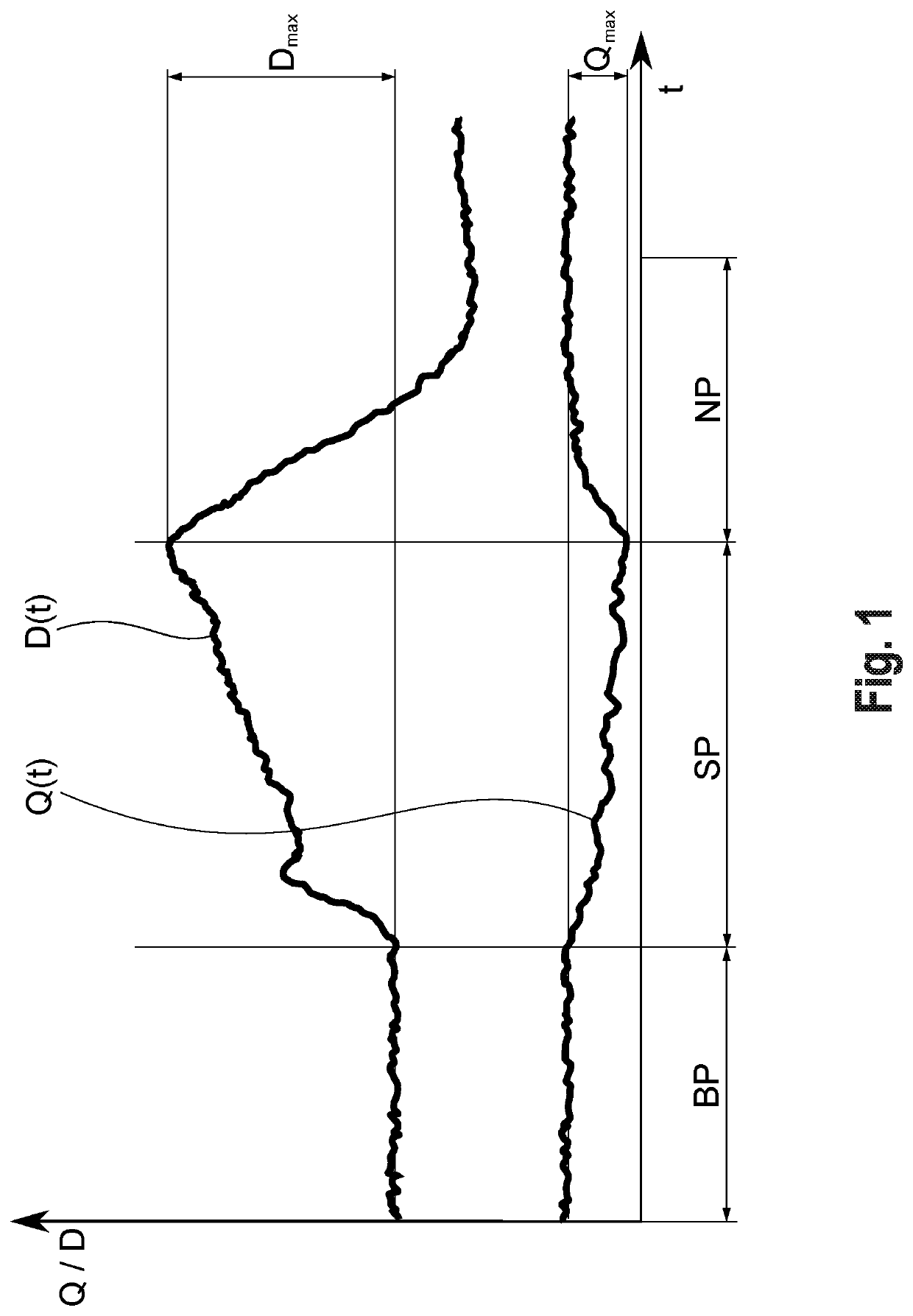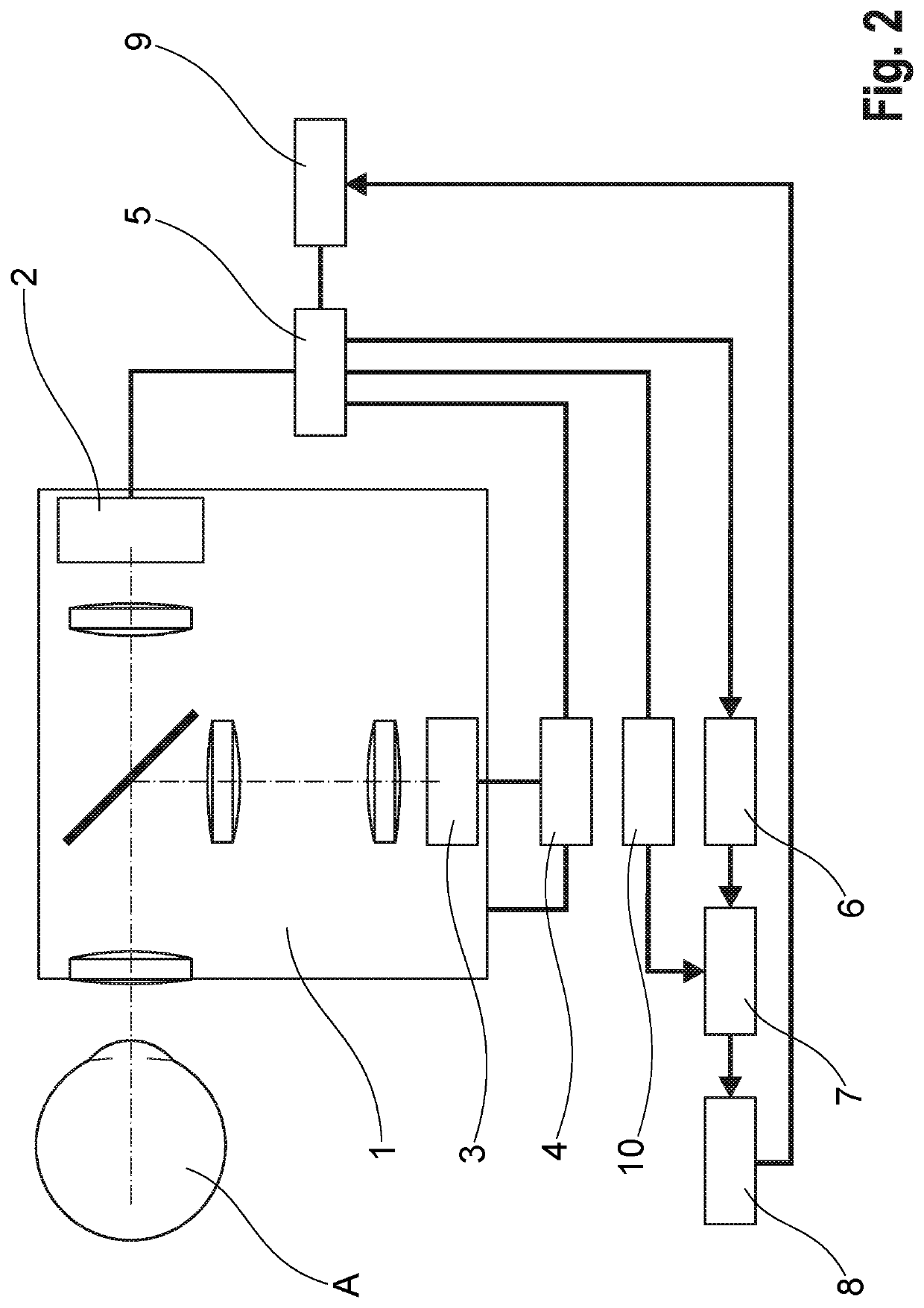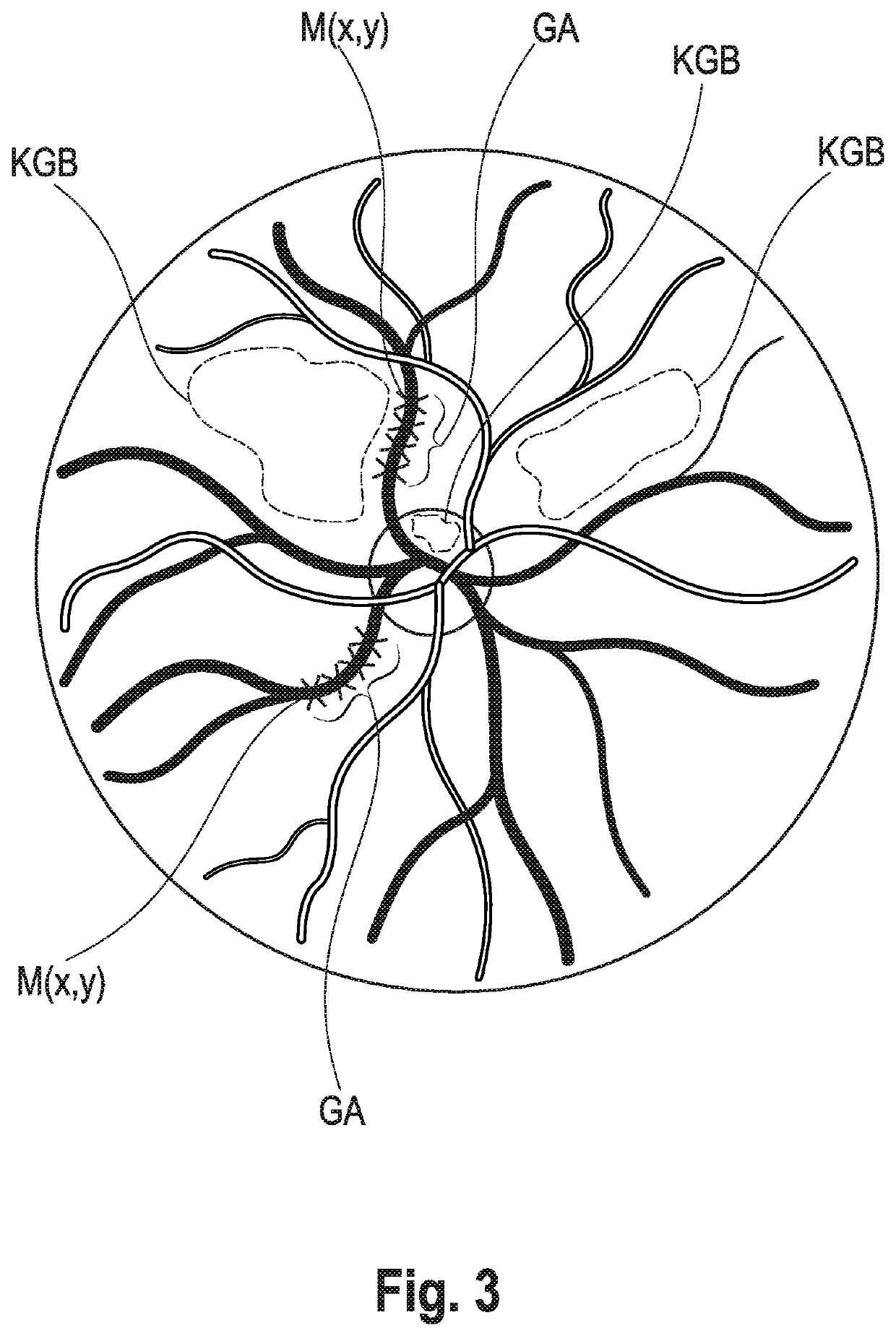Method and Device for Examining the Neurovascular Coupling at the Eye of a Patient
a neurovascular coupling and eye technology, applied in the field of vascular medicine, can solve the problems of increasing the exposure of the retina to light, limiting the range of applications and adaptivity, and inability to capture the function of vascular regulation, so as to avoid errors in the assessment of endothelial function and improve diagnostic reliability
- Summary
- Abstract
- Description
- Claims
- Application Information
AI Technical Summary
Benefits of technology
Problems solved by technology
Method used
Image
Examples
Embodiment Construction
[0057]In a method for examining neurovascular coupling at the eye A, an imaging method is used to record an image sequence of images of the fundus of the eye, preferably over a baseline phase BP, a stimulation phase SP in which the fundus is stimulated with a flickering light, and a posterior phase NP, see FIG. 1.
[0058]A signal is derived from the image sequence for at least one capillary vessel region KGB, which represents a capillary vessel response (signal of a measured variable) of the capillary vessels to the stimulation of the retina and whose maximum change during the stimulation phase SP represents an evaluation criterion (biomarker) for NVC. Basically, such a capillary vessel response (vascular signal) can be the changes in capillary blood flow or capillary blood velocity, in capillary vessel diameter or capillary blood volume in the retina or on the optic nerve head during the stimulation phase SP.
[0059]It is irrelevant by which imaging method the at least one image sequen...
PUM
 Login to View More
Login to View More Abstract
Description
Claims
Application Information
 Login to View More
Login to View More - R&D
- Intellectual Property
- Life Sciences
- Materials
- Tech Scout
- Unparalleled Data Quality
- Higher Quality Content
- 60% Fewer Hallucinations
Browse by: Latest US Patents, China's latest patents, Technical Efficacy Thesaurus, Application Domain, Technology Topic, Popular Technical Reports.
© 2025 PatSnap. All rights reserved.Legal|Privacy policy|Modern Slavery Act Transparency Statement|Sitemap|About US| Contact US: help@patsnap.com



